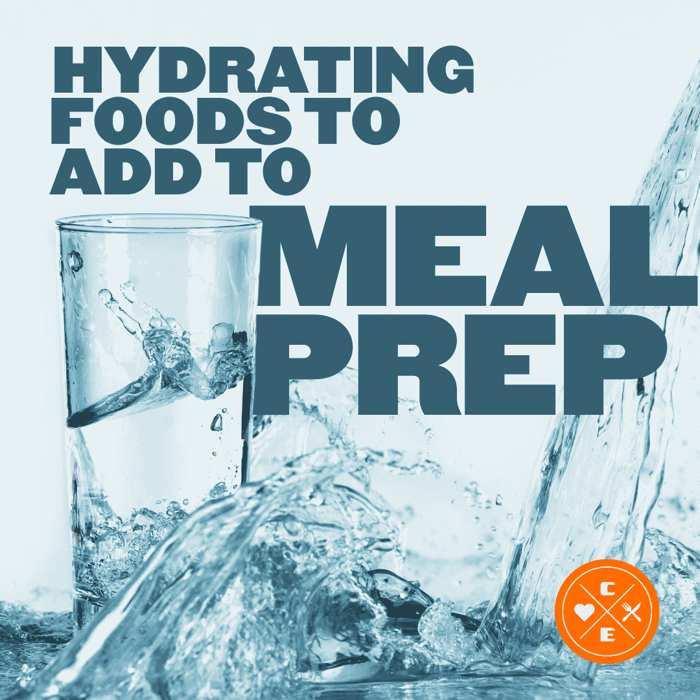
What Are Macronutrient Ratios for Weight Loss?
Jason Nista
Nutrition
|
Weight Loss
16 minute read
Table of Contents
- How To Set Macros For Fat Loss (Nutrition Doctor Explains)
- Best Macronutrient Ratios for Weight Loss
- How Macronutrient Ratios Affect Weight Loss
- How to Calculate and Track Your Macronutrient Ratios
- How to Plan Macro-Balanced Meals
- Finding the Right Macronutrient Balance for Your Weight Loss Goals
- FAQs
- FAQs
When losing weight, it’s not just about eating fewer calories - it’s about where those calories come from. Macronutrient ratios (how much protein, carbs, and fat you eat) play a key role in how your body uses food for energy, manages hunger, and preserves muscle.
Here’s the quick breakdown:
- Protein: Helps keep you full and preserves muscle. Aim for 25–35% of your calories or 1.2–2 grams per kilogram of body weight.
- Carbohydrates: Provide energy. Stick to 40–50% of your calories, focusing on whole grains, fruits, and veggies.
- Fats: Support hormones and long-term energy. Keep it at 20–30% of your daily intake, prioritizing healthy fats like olive oil, nuts, and avocados.
The best ratio depends on your activity level, health, and preferences. A common starting point for weight loss is 40% carbs, 30% protein, and 30% fat, but consistency and tracking are key to finding what works for you. Apps like MyFitnessPal or Cronometer can help you monitor your intake and adjust as needed.
How To Set Macros For Fat Loss (Nutrition Doctor Explains)
Best Macronutrient Ratios for Weight Loss
Finding the right macronutrient balance for weight loss doesn’t have to be complicated. By following established guidelines and adjusting them to your specific needs, you can create a plan tailored for fat loss.
U.S. Dietary Guidelines: Acceptable Macronutrient Distribution Ranges (AMDR)
The Acceptable Macronutrient Distribution Range (AMDR) offers a framework for healthy eating in the United States. These guidelines help health professionals recommend nutrient ranges that support adequate micronutrient intake while reducing the risk of chronic diseases.
Here’s what the AMDR suggests for adults:
- Carbohydrates: 45–65% of total daily calories
- Fats: 20–35% of total daily calories
- Protein: 10–35% of total daily calories
These ranges are broad enough to fit various dietary preferences while ensuring a balance of nutrients. For example, if you’re eating 2,000 calories a day and aim for the middle of these ranges, that translates to roughly 225 grams of carbohydrates (45%), 133 grams of protein (27%), and 62 grams of fat (28%).
Popular Weight Loss Ratios
While the AMDR provides general health guidance, certain macronutrient ratios are commonly used for weight loss. Research suggests that a typical fat-loss ratio might include 40-50% carbohydrates, 25-35% protein, and 20-30% fat, though these percentages can be adjusted based on individual needs.
One effective ratio studied is 5:3.5:1.5 (carbs:protein:fat). Participants following this ratio lost 10.5 pounds of fat and gained 2.5 pounds of muscle, outperforming those on a standard diet, who lost 7.7 pounds of fat and gained no muscle.
Another common approach includes 45% protein, 30% carbohydrates, and 25% fat. Higher protein levels are particularly beneficial because they enhance satiety and help preserve lean muscle during weight loss. As research highlights, protein plays a crucial role in minimizing muscle loss and keeping you full while in a calorie deficit.
Ultimately, the best ratio is one you can stick to consistently. Adherence to your plan is often a stronger predictor of success than the specific numbers.
Factors That Affect Your Macronutrient Needs
Your ideal macronutrient balance depends on several personal factors. While general ratios are helpful, individual characteristics can refine your approach for better results.
Age is a key factor. For example, children aged 1–3 have the highest protein needs per kilogram due to rapid growth, while older adults may require more protein to counter age-related changes in metabolism.
Activity level also plays a significant role. Athletes and active individuals need more carbohydrates for energy and protein for recovery, while sedentary individuals might benefit from reducing carbs and focusing more on protein and healthy fats.
Health conditions can further influence your needs. For instance, those with insulin resistance might benefit from lower carbohydrate intake, while individuals with chronic kidney disease must carefully balance protein to manage their condition [7, 11].
Personal preferences shouldn’t be overlooked either. Your macronutrient split should align with what you enjoy eating and can maintain long-term, as long as it meets your nutritional and caloric needs.
If you’re struggling with hunger, try increasing your protein intake by 5%. And if your energy dips during workouts, adding whole grains, fruits, or starchy vegetables can help. Small adjustments like these can make your plan more sustainable and easier to fit into your daily routine.
How Macronutrient Ratios Affect Weight Loss
Macronutrients play a vital role in weight loss by influencing muscle preservation, energy levels, and hormone regulation. Striking the right balance among these nutrients is key to achieving your weight loss goals effectively.
How Protein Helps with Weight Loss
When you're in a calorie deficit, your body may lose 11–50% of its muscle mass. Protein helps counter this by providing the necessary building blocks to repair and maintain muscle tissue. It also keeps you feeling satisfied longer, which can help curb overeating.
Research backs this up: a meta-analysis revealed that higher protein intake significantly reduces muscle loss in adults with overweight or obesity. While the general recommendation is 0.8 grams of protein per kilogram of body weight daily, those focused on preserving muscle should aim for 1.2–1.6 grams per kilogram. Consuming more than 1.3 g/kg/day may even promote muscle growth, while intakes below 1.0 g/kg/day are associated with greater muscle loss.
For best results, try to include 25–30 grams of high-quality protein in each meal to stimulate muscle synthesis. As Dominique R. Williams, MD, MPH, a medical director and obesity specialist at Abbott, explains:
"As intake or appetite changes, it can be hard for people losing weight to get the protein, vitamins, and minerals they need to support their unique health goals. Those gaps in nutrition can have a negative impact on muscle health."
Next, let’s look at how carbohydrates fuel your body for workouts and recovery.
Carbohydrates and Energy Balance
Carbohydrates are your body’s main energy source, powering your brain and physical activities. When consumed, carbs are converted into glucose for immediate energy or stored for later use.
The type of carbs you consume matters. Complex carbohydrates, such as whole grains and starchy vegetables, digest more slowly than simple sugars, providing sustained energy and helping you feel full longer. For most people aiming to lose weight, a daily intake of 100–150 grams of carbohydrates (about 40–50 grams per meal) is sufficient. However, the FDA’s Daily Value for carbs is 300 grams for a 2,000-calorie diet.
Your activity level also affects how many carbs you need. If you cut carbs too much, your exercise performance may suffer, especially during high-intensity activities like weightlifting or sprinting. For those engaging in moderate-to-intense workouts, adding carbs before, during, or after exercise can help sustain energy and speed up recovery. Athletes, such as runners, rely heavily on carbohydrate stores for optimal performance. Choosing complex carbs like fruits, whole grains, and legumes can help maintain steady blood sugar levels and keep you satisfied longer.
Now, let’s explore the role of fats in hormonal health and long-term energy stability.
Fats and Hormonal Health
Fats are essential for maintaining hormonal balance, especially during weight loss. They serve as the building blocks for various hormones and neurotransmitters. Additionally, fats help your body absorb fat-soluble vitamins (A, D, E, and K), which are vital for numerous bodily functions.
As Nicki Williams from Happy Hormones For Life explains:
"Without adequate fat in your diet, your hormones are likely to suffer."
Healthy fats also stabilize blood sugar levels and promote feelings of fullness, which can reduce cravings. Focus on incorporating more monounsaturated and polyunsaturated fats from sources like olive oil, sunflower oil, nuts, and seeds. Omega-3 fatty acids, found in salmon, mackerel, sardines, or high-quality supplements, are particularly beneficial for hormonal health.
Maintaining a healthy fat intake not only supports hormone production but also helps regulate body temperature and overall metabolic health during weight loss.
sbb-itb-1989a25
How to Calculate and Track Your Macronutrient Ratios
Breaking down your macronutrient needs doesn’t have to be complicated. It starts with understanding your daily calorie requirements and then dividing those calories into the right mix of carbs, proteins, and fats.
"By calculating the appropriate daily calorie amount for you, we can then break this down into the best macronutrient ratios to achieve weight loss."
Step 1: Determine Your Daily Calorie Needs
Daily calorie needs typically range from 1,600 to 3,000 calories. Men often require more (2,000–3,000) than women (1,600–2,400). However, your specific needs depend on factors like height, weight, age, and activity level.
To find your Basal Metabolic Rate (BMR) - the calories your body burns at rest - use the Harris-Benedict equation:
BMR = 655 + (4.35 x weight in pounds) + (4.7 x height in inches) – (4.7 x age).
Next, multiply your BMR by an activity multiplier to calculate your Total Daily Energy Expenditure (TDEE):
| Activity Level | Multiplier |
|---|---|
| Little or no exercise | 1.2 |
| Light exercise a few times a week | 1.375 |
| Moderate exercise 3–5 times a week | 1.55 |
| Heavy exercise 6–7 times a week | 1.725 |
For weight loss, reduce your TDEE by 500 calories to aim for losing about 1 pound per week. Adjust this number as needed based on your goals or changes in activity level.
Step 2: Translate Calories Into Macronutrient Targets
Once you know your calorie target, divide it into macronutrient percentages. According to the 2020–2025 Dietary Guidelines for Americans, the recommended ranges are:
- Carbs: 45–65%
- Protein: 10–35%
- Fats: 20–35%.
Here’s an example for a 2,000-calorie diet with a 40% carbs, 30% protein, and 30% fat split:
- Carbohydrates: 40% of 2,000 = 800 calories ÷ 4 calories/gram = 200 grams of carbs
- Protein: 30% of 2,000 = 600 calories ÷ 4 calories/gram = 150 grams of protein
- Fats: 30% of 2,000 = 600 calories ÷ 9 calories/gram = 67 grams of fat
You can tweak these ratios to match personal goals, like improving blood sugar control or enhancing athletic performance. For weight loss, many find that increasing protein helps preserve muscle and keeps hunger in check.
Step 3: Track and Adjust Your Macros
Tracking your macros is key to staying on target. Studies show that consistent tracking is strongly linked to weight loss success. Use apps like MyFitnessPal, Cronometer, or MacrosFirst to log your food and monitor your ratios.
- MyFitnessPal: Known for its extensive food database and wearable integrations.
- MacrosFirst: A user-friendly app focused on accurate macro tracking.
- Cronometer: Excellent for detailed nutrient tracking, including both macros and micronutrients.
For accurate tracking, invest in a digital food scale and measuring cups. Wearable devices and smart scales can also provide insights into calorie burn, activity levels, and body composition.
Focus on long-term trends rather than stressing over daily changes. Choose nutrient-dense foods to hit your macro goals while maintaining overall health. Regularly assess your progress and adjust your macros as needed.
How to Plan Macro-Balanced Meals
Once you've calculated your macros, the next step is planning meals that align with those numbers. Whether you're whipping up dishes at home or relying on meal delivery services, the goal is to find what works for your routine while supporting your weight loss objectives.
Building Balanced Meals at Home
Start with the plate method: divide your plate into sections for protein, vegetables, healthy fats, and complex carbohydrates. This simple visual guide helps you portion meals without needing to weigh every ingredient.
Batch cooking is another game-changer. Prepare proteins, veggies, and starches separately so you can mix and match throughout the week. Add variety by using different marinades or seasonings - this keeps your meals flavorful without extra effort.
"At the end of the day, prepping & planning ahead can be a life-saver. The busier you are, the more crucial it is to plan, plan, plan ahead." – Leigh Merotto
Mornings can be hectic, so having quick, macro-friendly breakfast options is a smart move. Try Greek yogurt with berries and nuts, scrambled eggs with avocado toast, or overnight oats mixed with protein powder.
Make use of kitchen gadgets like slow cookers or Instant Pots to save time. For instance, toss chicken, vegetables, and quinoa into a slow cooker with your favorite spices, and you'll have several meals ready for the week.
If prepping meals daily feels overwhelming, look into macro-balanced meal delivery services for added convenience.
Use Macro-Balanced Prepared Meals
For those with packed schedules, services like Clean Eatz Kitchen offer chef-prepared meals designed with balanced macros and portion control in mind. They cater to various needs with options like weight loss, high-protein, and customizable plans - all with clear nutritional details and no subscription required.
Their rotating monthly menu includes gluten-free and customizable choices, as well as popular "Hall of Fame" dishes. Plus, the Build Your Meal Plan feature lets you tailor meals to your exact macro needs.
Macro-Friendly Meal Ideas
Need inspiration? Here's a simple example of a macro-balanced meal:
- Meal Prep Bowl: Combine 4 oz of ground turkey, ½ cup of cooked brown rice, ¼ cup of black beans, and a serving of guacamole. This offers a balanced macro breakdown of about 30g protein, 40g carbs, and 15g fat.
Don't overlook leftovers - they're a time-saver and help you stick to your macro goals. Cook in larger batches and freeze portions for easy, consistent meals later on.
Whether you're cooking at home or opting for prepared meals, these strategies make it easier to stay on track with your macro plan and weight loss journey.
Finding the Right Macronutrient Balance for Your Weight Loss Goals
Your ideal macronutrient balance depends on several factors, including your age, overall health, activity level, and personal preferences. What works for someone else might not necessarily suit your body or lifestyle, so finding the right mix is a highly personal journey.
The Dietary Guidelines for Americans 2020–2025 suggest a general range of 45–65% carbohydrates, 20–35% fat, and 10–35% protein. However, many people aiming for weight loss often adjust to a ratio closer to 25–30% protein, 40–50% carbohydrates, and 20–30% fats. This approach provides a solid starting point, but the key is finding a balance that you can maintain over time.
Consistency plays a huge role in weight loss success. If your current macro ratio leaves you feeling drained or constantly hungry, it’s worth tweaking your targets. This aligns with earlier discussions on macronutrient tracking, emphasizing the importance of a plan that’s both effective and sustainable.
Tracking progress isn’t just about the scale. Pay attention to how you feel overall. If you’re hungry shortly after meals, it might help to increase your intake of protein or healthy fats. Opt for nutrient-packed foods like lean proteins, whole grains, and healthy fats, which fuel your body more effectively than processed options. While maintaining a calorie deficit is essential for weight loss, the right macronutrient balance can make that process much more manageable - and even enjoyable.
For those with packed schedules, ready-made meal solutions can be a lifesaver. Services like Clean Eatz Kitchen offer portion-controlled meals with balanced macros, saving you time on planning and preparation. Their clear nutritional labeling makes it easier to stay on track, and users have reported a 38% decrease in stress related to meal decisions.
Ultimately, the best macronutrient ratio for weight loss depends on your unique health goals and lifestyle. When trying a new ratio, give it at least 2–3 weeks for your body to adjust before making any major changes. Small, gradual adjustments are far more sustainable than drastic overhauls.
FAQs
What is the best macronutrient ratio for weight loss and how can I find one that works for me?
Finding the right macronutrient balance for weight loss isn't a one-size-fits-all approach. It largely depends on your goals, lifestyle, and how your body reacts to different foods. A good starting point is the general guideline of 45-65% carbohydrates, 20-35% fats, and 10-35% protein. From there, you can tweak these percentages based on your activity level, metabolic health, and personal preferences.
For instance, if you're dealing with insulin resistance, lowering your carb intake might be beneficial. On the other hand, increasing protein can help maintain muscle while you're shedding pounds. The key is to experiment within these ranges and pay attention to how your body responds - both in terms of performance and how you feel overall.
To make sticking to your nutrition plan easier, Clean Eatz Kitchen offers chef-prepared, portion-controlled meals designed for various dietary needs, including weight loss and high-protein options. These meals are delivered nationwide and come ready to heat and enjoy, giving you a convenient way to stay on track.
How can I tell if my macronutrient ratio isn’t right for weight loss?
If your macronutrient ratio isn’t quite aligned with your weight loss goals, you might notice a few telltale signs. These can include feeling constantly hungry, experiencing low energy, or hitting a plateau where your progress stalls despite sticking to your plan. In some cases, you might even see unexpected weight gain, signaling that your macro balance could use some tweaking.
Keep in mind that successful weight loss largely hinges on maintaining a calorie deficit. Your macronutrient ratio should work to keep you feeling full, energized, and motivated to stay on track. If finding the right balance feels overwhelming, it might be worth reaching out to a nutrition expert or trying tools like portion-controlled meal plans to make things easier.
How can I track and adjust my macronutrients for successful weight loss?
To keep your macronutrient intake on track for weight loss, the first step is figuring out your daily calorie needs and setting a macronutrient breakdown that matches your goals. A popular starting ratio is 40% carbohydrates, 30% protein, and 30% fats, though you can tweak it based on your lifestyle and activity level.
Tools like macro tracking apps or food journals can make logging your meals and monitoring your intake much easier. Staying consistent with your calorie and macro targets is key, but don’t hesitate to make small adjustments as needed. For weight loss, cutting your calorie intake by 15–25% while ensuring you get enough protein can help you maintain muscle and focus on fat loss.
Keeping a close eye on your macros and making gradual changes helps you stay on course and maintain your energy. If you’re looking for a hassle-free way to manage portion sizes and meet your goals, Clean Eatz Kitchen offers chef-prepared meals designed for weight loss, high-protein diets, and more.
Related Articles
Best Foods for Post-Workout Recovery
31 minute read
Best Hidden Veggie Recipes for Kids
22 minute read
Hydrating Foods to Add to Meal Prep
29 minute read



